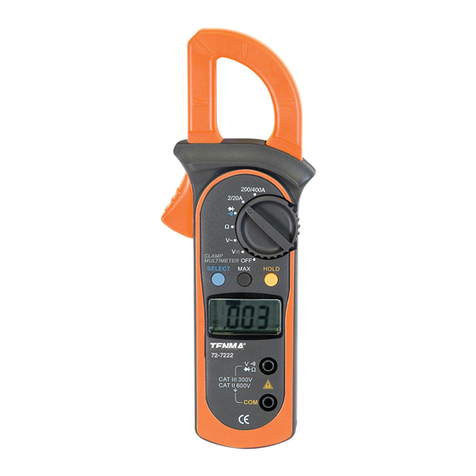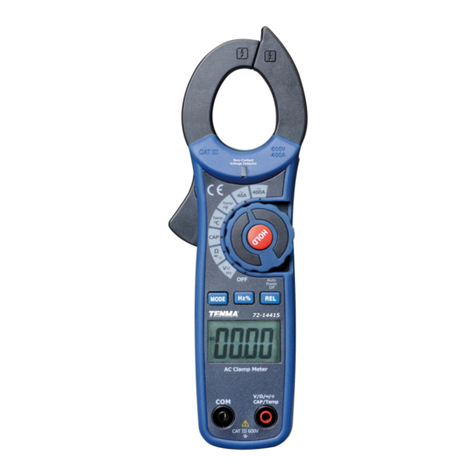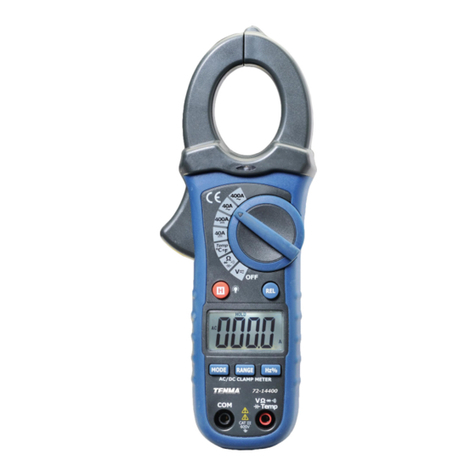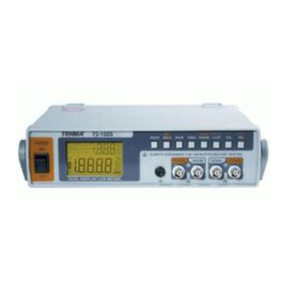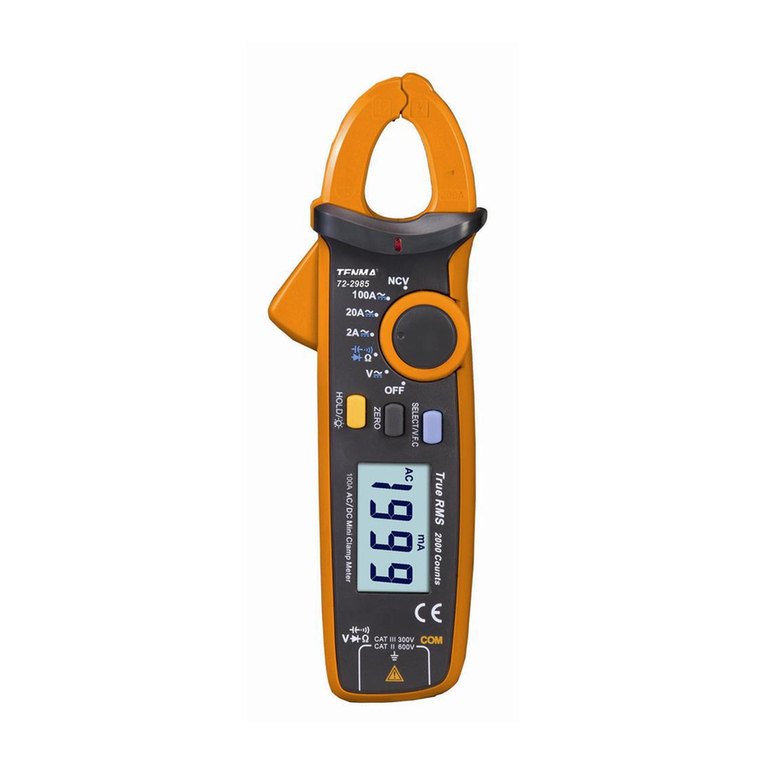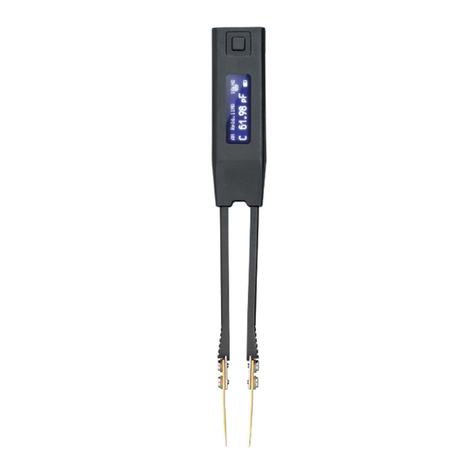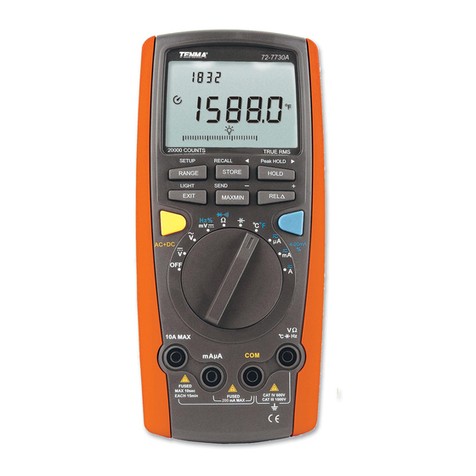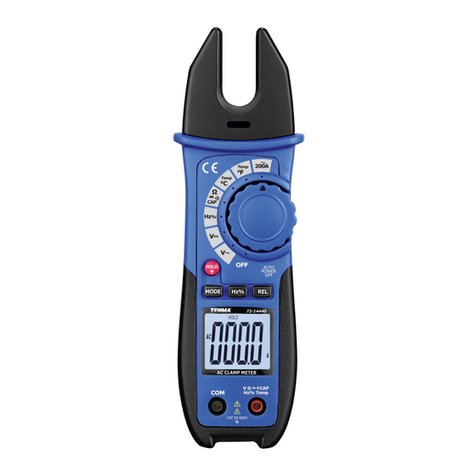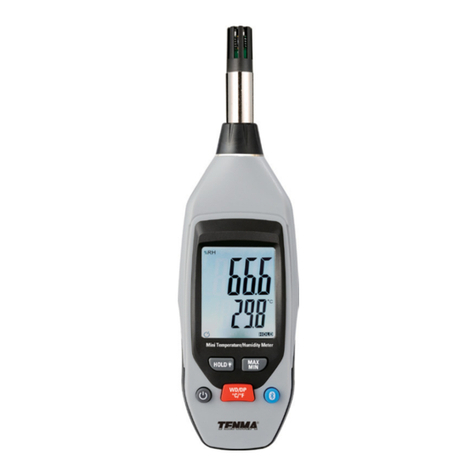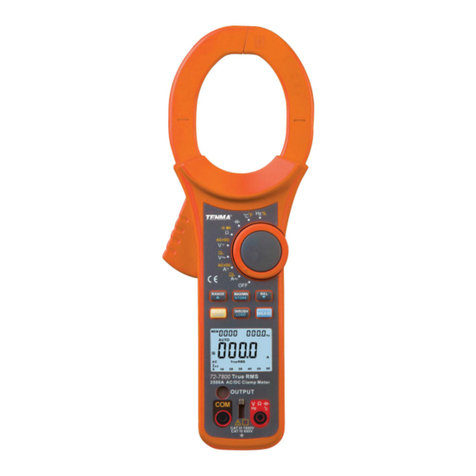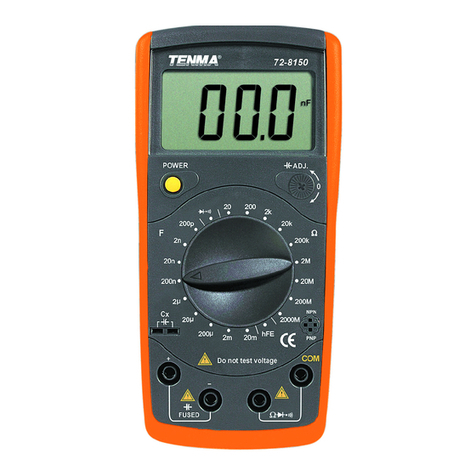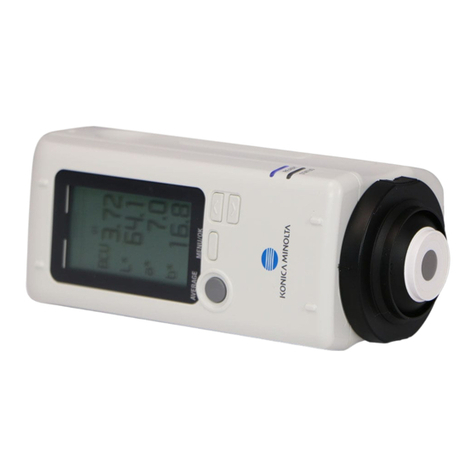Page <3> V1.010/01/18
I. General Characteristics and Safety Notice
The 72-10465 LCR meter features an easy to read dual display measurement of 19999/1999. It also has serial and parallel
measurement modes which can be used to select quality factor, loss factor, phase location angle, and equivalent resistance
of measure articles. Intelligent detection and ve different test frequencies enable accurate readings for all sizes of capacitors
and inductors. The user can also access the stored data on a PC with the included USB connection and interface software.
The compact size and case make this unit far more portable than a bench top meter.
Measurement Range and Precision
L: 20mH---2000H Best accuracy (0.5% +5);
C: 200pf---20mF Best accuracy (0.5% +5);
R: 20Ω---200MΩ Best accuracy (0.3% +5);
Impedance/frequency DCR 100/120Hz 1kHz 10kHz 100kHz
0.1-1 1% 1% 1% 1% 1%
1-10 0.5% 0.5% 0.5% 0.5% 0.5%
10-100k 0.3% 0.3% 0.3% 0.5% 0.3%
100k-1M 0.5% 0.5% 0.5% 1%
1M-20M 1% 1% 1%
20M-200M 2% 2% 5%
Remark D<0.1
Note: Please multiply by √1+D2if D exceeds 0.1
Formula to convert capacitance to impedance: Zc=1/2πfC
Formula to convert inductance to impedance: ZL=2πfL
Please abide by the following instructions to ensure safe use of the meter:
1) Do not use the meter in an extreme environment, especially dusty environments, near high radiation, or around amma-
ble substances.
2) Do not attempt to alter, repair, or calibrate the unit yourself. Such work should only be done by a trained professional or
as directed by your distributor.
3) Do not attempt to modify the meter, break insulation, or remove working parts.
4) Be certain that all circuits have been shut down and are free of voltage.
5) Do not apply any input voltage to the meter. Be sure to discharge any electried components such as capacitors.
6) This meter can be powered by two different methods. The rst is by a 9V battery, and the second is by the included USB
cable. USB will also allow the unit to sync data while it is being powered to save the life of the battery.
II. Ambient Conditions
1) Altitude: <2000 meters
2) Storage humidity: = 75% RH
3) Operating environment: 0°C ~ 40°C
4) Storage environment: -20°C ~ +50°C
Ill. Function Characteristics
1) Main display of 19,999 and auxiliary display of 1 ,999
2) Measurement frequency: 1 00Hz/120Hz/1kHz/10kHz/100kHz
